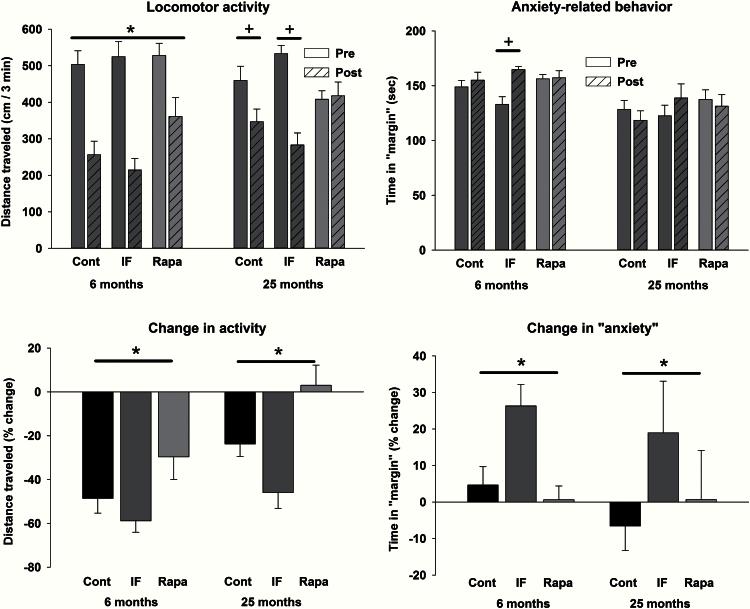Figure 4.
Locomotor activity (left panels) and a measure of anxiety (right panels) in control, intermittent feeding (IF), and rapamycin treatment groups of both ages. Regarding absolute levels of locomotor activity (top panel), there was a significant main effect of phase in the young animals (activity decreased in all groups with repeated testing), and a significant interaction in the old animals (decreases in control and IF rats, with no change in rapamycin-treated animals). Regarding the % change in activity (bottom panel), there were significant main effects of age (larger decrease in young rats) and treatment condition (rapamycin> control > IF). For the anxiety absolute measures (top panel), there was a significant interaction with increases in anxiety due to treatment in the young animals. Regarding the % change in anxiety (bottom panel), IF animals spent more time in the margin following treatment compared with control and rapamycin groups at both ages. For the absolute measures, * indicates a significant main effect of phase, and + indicates a difference following a significant interaction. For the relative measures, * indicates a significant main effect of treatment group.

